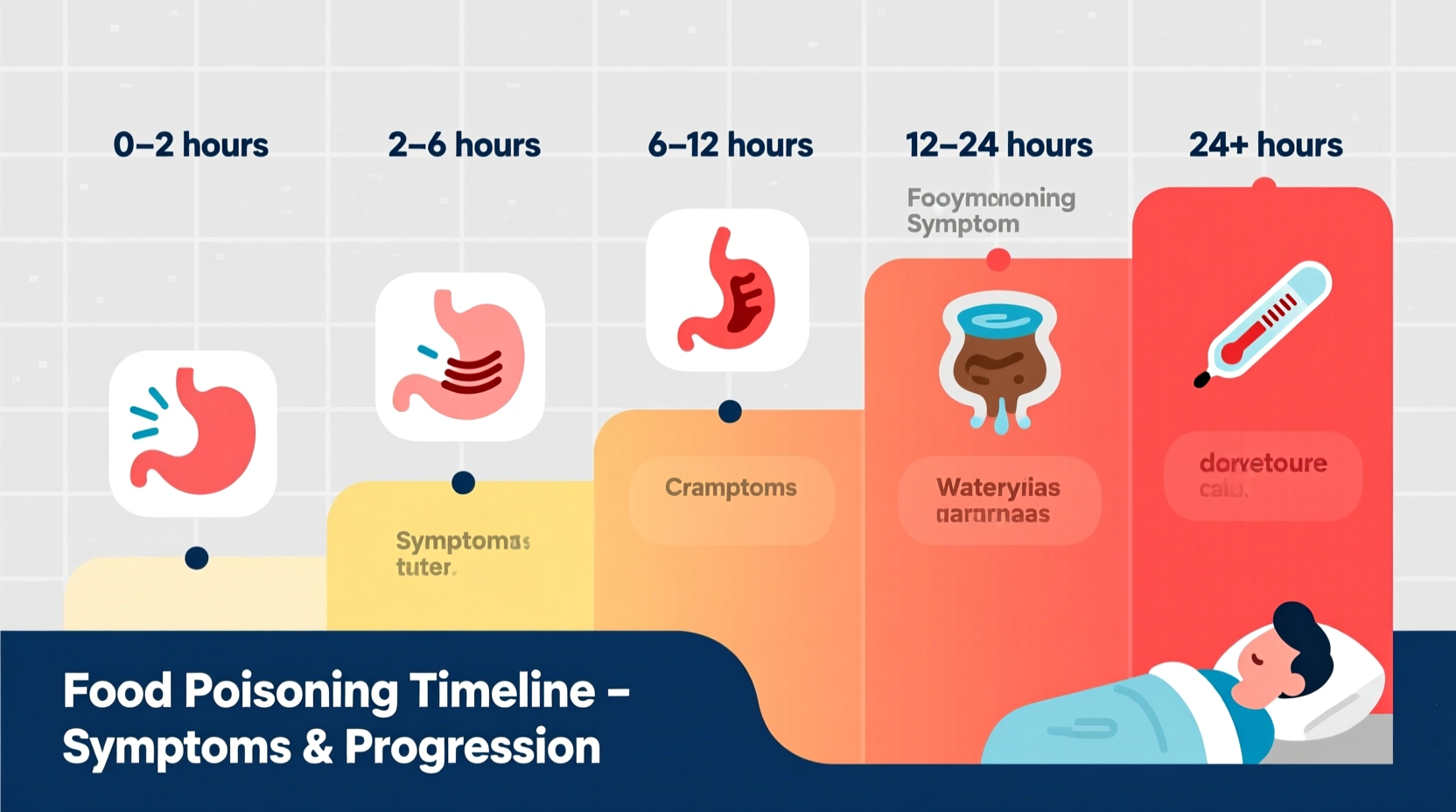Recognizing the Earliest Warning Signs Within Hours
When food poisoning begins, your body sends clear distress signals. The very first symptoms usually hit within hours of exposure to contaminated food, often catching people by surprise during what seemed like a normal day. Understanding these initial warning signs helps you take appropriate action before symptoms escalate.
Nausea frequently serves as the earliest indicator—often described as a sudden, unexplained queasiness that doesn't go away. This is commonly followed by abdominal cramps that range from mild discomfort to severe, gripping pain. Many people report feeling unusually fatigued or experiencing chills before vomiting or diarrhea begins.
| Symptom | Typical Onset Time | How It Presents |
|---|---|---|
| Nausea | 6-24 hours | Sudden queasiness, loss of appetite, feeling "off" |
| Stomach cramps | 6-18 hours | Sharp, intermittent abdominal pain |
| Vomiting | 12-48 hours | Forceful expulsion, sometimes projectile |
| Watery diarrhea | 12-72 hours | Frequent loose stools, sometimes explosive |
Food Poisoning Timeline: What Happens in the First 72 Hours
Understanding the progression of symptoms helps distinguish food poisoning from other stomach issues. According to the Centers for Disease Control and Prevention, most foodborne illnesses follow a predictable pattern:
- 0-6 hours: Some aggressive pathogens like Staphylococcus aureus can cause symptoms within hours, but this is less common
- 6-24 hours: Most common pathogens (Salmonella, E. coli) begin showing symptoms—nausea and cramps typically lead
- 24-48 hours: Symptoms peak with vomiting, diarrhea, and possible fever
- 48-72 hours: Gradual improvement begins for most healthy adults
- 3-7 days: Complete recovery for most uncomplicated cases

How Food Poisoning Differs From Stomach Flu
Many people confuse food poisoning with viral gastroenteritis (stomach flu), but key differences exist. The FDA tracks these distinctions carefully because proper identification affects treatment approaches.
| Characteristic | Food Poisoning | Stomach Flu |
|---|---|---|
| Onset time | 6-72 hours after eating | 1-3 days after exposure |
| Initial symptoms | Nausea, cramps, vomiting | Body aches, fever first |
| Duration | Usually 1-2 days | 1-3 days |
| Contagious? | Usually not (except norovirus) | Highly contagious |
Immediate Actions When First Symptoms Appear
When you recognize these early warning signs, your next steps significantly impact your recovery. The Mayo Clinic recommends these immediate actions:
First 6 Hours: Damage Control
- Stop eating immediately—give your digestive system a complete rest
- Start small sips of electrolyte solution (not plain water yet)
- Don't take anti-diarrheal medication during initial vomiting phase
- Track symptoms including exact times and what you ate recently
6-24 Hours: Managing the Peak
- Hydrate strategically with oral rehydration solutions every 15 minutes
- Apply heat to abdominal area to ease cramping
- Rest completely—no physical exertion while symptoms are active
- Monitor for dehydration signs like dry mouth or dark urine
When to Seek Medical Help Immediately
Certain symptoms indicate you need professional care. The CDC identifies these red flag symptoms requiring immediate medical attention:
- Vomiting blood or material that looks like coffee grounds
- Diarrhea containing blood or pus
- Signs of severe dehydration (dizziness when standing, no urine for 12+ hours)
- High fever above 101.5°F (38.6°C)
- Symptoms lasting longer than 72 hours without improvement
- Numbness, blurred vision, or muscle weakness (possible botulism)
Infants, elderly individuals, pregnant women, and those with compromised immune systems should contact healthcare providers at the first sign of symptoms, as they can deteriorate rapidly.
Preventing Future Episodes: Food Safety Essentials
According to World Health Organization data, proper food handling prevents most food poisoning cases. Implement these evidence-based practices:
- Temperature control: Keep cold foods below 40°F (4°C) and hot foods above 140°F (60°C)
- Cooking temperatures: Use a food thermometer—poultry to 165°F, ground meats to 160°F, fish to 145°F
- Cross-contamination prevention: Use separate cutting boards for raw meats and produce
- Hand hygiene: Wash hands thoroughly before handling food and after using the bathroom
- Leftover safety: Refrigerate within 2 hours (1 hour if above 90°F/32°C)
Recovering Completely After Food Poisoning
As symptoms subside, proper recovery nutrition matters. Most people make the mistake of returning to normal eating too quickly. The National Institute of Diabetes and Digestive and Kidney Diseases recommends this gradual approach:
- Days 1-2: Clear liquids only (broth, electrolyte solutions)
- Days 3-4: BRAT diet (bananas, rice, applesauce, toast)
- Days 5-7: Gradual reintroduction of lean proteins and cooked vegetables
- Week 2: Return to normal diet, avoiding spicy/fatty foods initially
Complete gut recovery often takes 1-2 weeks after symptoms disappear. Probiotics may help restore healthy gut bacteria, but consult your healthcare provider before starting supplements.











 浙公网安备
33010002000092号
浙公网安备
33010002000092号 浙B2-20120091-4
浙B2-20120091-4